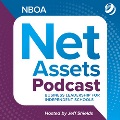Apr 13, 2020, 12:42 PM
(from RSM) Last Thursday, April 9, the Federal Reserve said it would provide up to $2.3 trillion in liquidity commitments to support the economy. This policy intends to bolster households, small and medium-sized firms, and the ability of state and local governments to float debt to ensure critical services during the pandemic. The Main Street Lending Program will permit small and medium-size businesses to obtain bridge financing through eligible lenders. U.S. firms with significant operations and a majority of its employees in the U.S. that had revenues of less than $2.5 billion in 2019 or 10,000 employees or fewer are eligible. Loan terms are a four-year maturity at an adjustable rate of SOFR plus 250-400 basis points with the minimum size of $1 million. Amortization of principal and interest will be deferred for one year.
(from Choice Remarks) Two professors of economics and education policy note that most independent schools will see significant enrollment declines due to the COVID-19 pandemic. They suggest schools advise families in financial distress about possibilities for funding their children’s education, such as tapping into home equity and/or taking money out of retirement accounts penalty-free in some cases under the recently passed CARES Act. They also suggest schools consider highlighting available aid, advocating for state funds, redirecting fundraising and reducing compensation and/or benefits if necessary.
(from McLane Middleton) Administrators cannot, and should not, make alone the many weighty decision regarding the future of their schools, according to David Wolowitz of McLane Middleton. Long-term survival beyond what is likely to be a severe recession requires immediate, complex, strategic planning. The school's board of trustees has the ultimate responsibility to set the strategic direction of the school and to protect the school’s finances, he said. The Board should form a nimble crisis response team and working procedures that outline how decisions are made.
(from Inside Higher Ed and SHRM) Last week, smaller private colleges began furloughing and laying off large numbers of employees, with warnings that furloughs may become permanent lay offs in the coming months. June is likely to be a key decision point on future furloughs and layoffs because the June 30 end of the fiscal year will be approaching and colleges will be working out their budgets for the new 2021 fiscal year.
If your organization needs to furlough employees, share what is known and give individuals an idea of what they can expect when they apply for unemployment. Many states require that applicants for unemployment insurance submit a letter of termination, even if it's in an e-mail. "The word termination is the worst to use right now. The term to use is 'lack-of-work notice,'" said consultant Deb Best. "Have a well-written letter that is short and includes that the notice is because of the governor's executive order [for people to stay home] and the lack of work, and include some of the benefits employees are eligible for." An HR manager can help by offering a prepared list of resources, including new benefits from recent legislation.
More from Inside Higher Ed and SHRM
(from McKinsey & Company and Forbes) McKinsey & Company has outlined three scenarios for the 2020-21 academic year. In the best case scenario, college students will be able to return to campus in the fall, but social distancing will still need to be practiced and study-abroad opportunities likely curtailed. In the worst case, online learning will continue throughout the 2020-21 school year, first-year students will not receive an on-campus orientation and many will not graduate in 2021. Yield rates could become far less predictable. Calls for tuition reduction may follow long periods of online learning. McKinsey advises colleges to set up a "nerve center"; focus on faculty and student resilience; and consider whether and how to make significant changes to current teaching models, making them more scalable, more flexible, lower cost, and, importantly, more engaging.
Even the most selective institutions will face difficult choices if campuses do not reopen in the fall, according to Southern New Hampshire University President Paul LeBlanc, a pioneer in online education. Expect program cuts, layoffs, halted capital projects, and then the closure of many institutions, he said. Academic rigor is a baseline, and students pay a premium for "everything else: the intentional community that is a campus, the opportunity to discover themselves, to participate in athletics, student organizations, study abroad, and more." In a fight for survival, many campuses will seize the opportunity to re-open, if they are given the choice and deem the risks to be moderate, he said.
More from McKinsey & Company and Forbes
(From The Washington Post) Dozens of colleges and universities have dropped SAT/ACT requirements for fall 2021 applicants, following the University of California system's announcement to suspend admission testing requirements. Some schools are using it as a pilot to determine whether to eliminate the requirement altogether, adding to a growing number of schools opting for test-flexible policies. The question of what schools will that could shift the test-flexible movement following the pandemic. Meanwhile, ACT has announced it will be offering new test options, such as online testing and ACT section retesting, in the coming year, as well as exploring remote proctoring for at-home testing.

Listen to the latest episode of the Net Assets podcast.